
With popular landmarks such as the Golden Gate Bridge, its namesake urban park, and a host of other urban attractions, camping typically isn’t the first thing that comes to mind when thinking about exploring the San Francisco Bay Area.
Well, we’re here to tell you it should be.
In a state that is home to nine national parks including Yosemite and Redwoods, camping competition can be fierce. Yet those familiar with the unique coastline and impressive diversity of public lands around the Bay Area know full well that proximal camping options rival some of the most coveted campgrounds in the state.
Whether you’re traveling through or residing in the Bay Area and simply looking for a nearby outdoor overnight, one need drive no further than a few hours drive from the urban core. In many cases only a fraction of that drive time is necessary to access campground gems set among scenic coastal backdrops, redwood groves and rolling oak savannah hills.
Below is a list of some of our favorite Bay Area campgrounds located within a 100-mile radius, stretching from the Sonoma Coast to northern Big Sur. While most campgrounds listed below are accessible by vehicle, some require a short walk or hike in. Note that reservations are recommended during weekends and holidays where applicable.
GERSTLE COVE CAMPGROUND, Salt Point State Park
Gerstel Cove Campground in Salt Point State Park has 30 drive-in sites located on the ocean side of Highway 1. While other campgrounds are available in the park, Gerstle Cove Campground offers the nearest ocean access and remains open year-round. As the name suggests, the campground is adjacent to Gerstle Cove, a State Marine Reserve that hosts a healthy underwater kelp forest. The rich marine ecosystem makes Gerstle Cove a popular spot for divers staying at the campground.
The campground is situated around a single loop, and the outer campsites offer more privacy than others. There are no showers. Reservations are possible year-round and strongly encouraged April through September.
- PROS: Easy access to Gerstle Cove. Exploring Salt Point State Park.
- CONS: Can be booked weekends April through September.
- REGION: Sonoma Coast + Napa Area, CA
- CONGESTION: High
- PREFERABLE SEASON(S):Winter, Spring, Summer, Fall
- CAMPING FEE: $35.00
- DAY-USE/PARKING PASS REQUIRED: $8.00
- TENT/CAR SITES: 30
- PICNIC TABLES: Yes
- DOGS ALLOWED: Yes, at campground but not on trails or beaches
BODEGA DUNES CAMPGROUND, Sonoma Coast State Park
Tucked away in the dunes behind the sand and crashing surf, Bodega Dunes Campground offers beach access and a tranquil camping option for visitors to Bodega Bay and the surrounding area. The campground is a couple of dunes away from South Salmon Creek Beach, a picturesque setting for beach combing, kite flying, and picnics. There area also a few surfing spots nearby, such as North Salmon Creek Beach a mile to the north.
The campground has campsites for car/tents or RVs up to 31 feet (although no RV hookups are available), bathrooms, showers and potable water. The majority of the campsites are shaded by Monterey cypress trees and some of the sites have sandy dune backdrops. There is a day use area with picnic tables and an access road within the campground closer to the beach.
- PROS: Beach access. Shaded campsites.
- CONS: Sounding of a foghorn througout the night.
- REGION: Sonoma Coast + Napa Area, CA
- CONGESTION: Low
- PREFERABLE SEASON(S): Spring, Summer, Fall
- CAMPING FEE: $35.00
- DAY-USE/PARKING PASS REQUIRED: $8.00
- TENT/CAR SITES: 98
- TENT/WALK-IN SITES: 1
- GROUP SITES: 1
- PICNIC TABLES: Yes
- DOGS ALLOWED: Yes, at campground but not on dunes or beaches
DORAN BEACH CAMPGROUND, Doran Regional Park
Surrounded by the waters of Bodega Bay and Bodega Harbor, Doran Beach Campground offers visitors a beautiful beachside setting and both car/tent sites and RV sites (although with no hookups). It’s a great camping spot for beachcombers and kayakers.
The campground is divided among four campground loops, Shell Campground, Gull Campground, Cove Campground and Jetty Campground, and also has a walk-in tent area and a group camping area. Shell, Gull and Cove Campgrounds are situated across the campground access road from Doran Beach, and Jetty Campground directly abuts the beach. Potable water is available throughout the campground, and dogs are allowed but must be kept on leash at all times.
- PROS: Access to Bodega Bay and Doran Beach. Great fishing. Boat launch.
- CONS: No hook-ups. Can get crowded on sunny weekends.
- REGION: Sonoma Coast + Napa Area, CA
- CONGESTION: High
- PREFERABLE SEASON(S): Winter, Spring, Summer, Fall
- CAMPING FEE: $35.00 to $37.00
- DAY-USE/PARKING PASS REQUIRED: Not Required
- TENT/CAR SITES: 128
- TENT/WALK-IN SITES: 10
- GROUP SITES: 1
- PICNIC TABLES: Yes
- DOGS ALLOWED: Yes, $2 per night fee
SKY CAMP, Point Reyes National Seashore
Founded in 1962, the Point Reyes National Seashore is a 70,000-acre park with access to long beaches, jagged cliffs, rain forests, and huge meadows. Trails are scattered throughout the area, and there are four large campgrounds: Glen, Coast, Wildcat, and Sky.
Sky Campground is located at an elevation of 1,025 feet and features 12 campsites, solar-powered bathrooms, and potable water. There is one large group site, but the other 11 are smaller sites for one or two tents. Grills have been removed due to fire hazard but each site still has a picnic table and food storage lockers; gas camp stoves are permitted. The sites that are further from the main trail are the most secluded, and some provide beautiful views of the Point Reyes Peninsula.
- PROS: Secluded campsites. Beautiful views.
- CONS: Sites are reserved early.
- REGION: Marin, CA
- CONGESTION: Moderate
- PREFERABLE SEASON(S): Winter, Spring, Summer, Fall
- CAMPING FEE: $30.00
- DAY-USE/PARKING PASS REQUIRED: Not Required
- TENT/WALK-IN SITES: 11
- GROUP SITES: 1
- PICNIC TABLES: Yes
- DOGS ALLOWED: Yes
PANTOLL CAMPGROUND, Mount Tamalpais State Park
Located half way up Mount Tamalpais’ forested southern slopes, Pantoll Campground is one of two first-come, first-served walk-in campgrounds within Mount Tamalpais State Park (Bootjack being the other). With 16 historic campsites lying beneath a quiet Douglas fir forest, time spent next to the campfire here will quickly expunge thoughts of the big city that lies just a few miles to the south.
- PROS: Direct access to Mount Tamalpais’ best hiking trails.
- CONS: Limited number of sites.
- REGION: Marin, CA
- CONGESTION: Moderate
- PREFERABLE SEASON(S): Spring, Summer, Fall
- CAMPING FEE: $25.00
- DAY-USE/PARKING PASS REQUIRED: $10.00
- TENT/WALK-IN SITES: 16
- PICNIC TABLES: Yes
- DOGS ALLOWED: Yes
BOOTJACK CAMPGROUND, Mount Tamalpais State Park
After over 40 years of closure, a renovated Bootjack Campground reopened in the fall of 2013, offering an additional 15 historic campsites within Mount Tamalpais State Park. The campground provides walk-in sites adjacent to the parking and day use area, and two sites that meet ADA standards. In an effort to preserve the historic character of the campground, campsites feature grills suspended over rock fire rings that are reminiscent of the Civilian Conservation Corps era.
Bootjack occupies an ideal location on Mount Tam, sitting at the junction of the Matt Davis and Bootjack Trails, two premier park hikes. The Bootjack trail leads down to Muir Woods National Monument. Pantoll Station is only a short distance up the trail, and this connects with numerous other Mount Tam trails, such as the Steep Ravine to Dipsea Trail Loop. There is a picnic area below the campground that provides views of the Redwood Creek and Muir Woods valley below.
- PROS: Quiet campground. Access to hiking trails.
- CONS: Limited number of sites.
- REGION: Marin, CA
- CONGESTION: Low
- PREFERABLE SEASON(S): Spring, Summer, Fall
- CAMPING FEE: $25.00
- DAY-USE/PARKING PASS REQUIRED: $10.00
- TENT/WALK-IN SITES: 15
- PICNIC TABLES: Yes
- DOGS ALLOWED: Yes, in campgrounds and on paved roads
LIVE OAK CAMPGROUND, Mount Diablo State Park
One of three main campgrounds within Mount Diablo State Park, Live Oak lies half way up the mountain’s southern slopes near the impressive sandstone formations of the Rock City area. As its name suggests, sites are set under large coast live oaks, some with impressive spans that provide welcome swaths of shade over the camp. Each site comes equipped with traditional Diablo fire grills, picnic tables, and raccoon boxes to help keep Mount Diablo’s critters away from your nightly feed. A covered picnic area is located near the restroom building.
The cozy campground is situated around a loop with perimeter sites offering slightly more privacy. Mout Diablo’s Summit Trail passes through the campground and continues up to Rock City, a short walk away. Dogs are permitted at the campground, though they must remain on a 6-foot leash, and they are not permitted on the nearby trails.
- PROS: Large coast live oaks. Diablo Grills.
- CONS: Typically hot in summer.
- REGION: East Bay, CA
- CONGESTION: Moderate
- PREFERABLE SEASON(S):Winter, Spring, Fall
- CAMPING FEE: $30.00
- DAY-USE/PARKING PASS REQUIRED: $10.00
- TENT/CAR SITES: 22
- PICNIC TABLES: Yes
- DOGS ALLOWED: Yes, in developed areas of park only
JUNIPER CAMPGROUND, Mount Diablo State Park
The largest campground in Mount Diablo State Park, Juniper Campground sits at 3,000 feet and overlooks Diablo Valley and much of the greater Bay Area. Laid out on a loop, a quarter of Juniper’s sites are situated on the western edge of the campground and provide spectacular views. The others offer better shade, and although they don’t offer the same views, they are only a short walk away. Traditional Diablo grills are provided for a handful of the roomier sites; the others are equipped with a campfire pit.
The Juniper Trail, part of the 7-mile Great Loop that circumnavigates Mount Diablo, passes next to the Juniper Campground and offers an excellent day hike option.
- PROS: Big vistas. Connection to the Juniper Trail and the Grand Loop.
- CONS: Sites with best vistas have limited shade.
- REGION: East Bay, CA
- CONGESTION: Moderate
- PREFERABLE SEASON(S):Winter, Spring, Fall
- CAMPING FEE: $30.00
- DAY-USE/PARKING PASS REQUIRED: $10.00
- TENT/CAR SITES: 36
- PICNIC TABLES: Yes
- DOGS ALLOWED: Yes, in developed areas of park only
JUNCTION CAMPGROUND, Mount Diablo State Park
With only six campsites, Junction Campground is Mount Diablo State Park’s coziest. Located at the junction between South Gate, North Gate, and Summit Roads, the campground sits under the shade of coast live oaks and opens to west-facing views that overlook Diablo’s lowers slopes and Diablo Valley. Each campsite comes equipped with traditional Diablo stone grills.
The Junction Ranger Station sits near the entrance road to the campground where helpful park and recreation information can be found. The Summit Trail also passes nearby, connecting campers to nice hiking and biking options around Mount Diablo’s hillsides and notable landmarks.
- PROS: Peaceful oak setting. Vistas. Diablo Grills.
- CONS: Limited number of sites.
- REGION: East Bay, CA
- CONGESTION: Moderate
- PREFERABLE SEASON(S):Winter, Spring, Fall
- CAMPING FEE: $30.00
- DAY-USE/PARKING PASS REQUIRED: $10.00
- TENT/CAR SITES: 6
- PICNIC TABLES: Yes
- DOGS ALLOWED: Yes, in developed areas of park only
COSTANOA KOA
Between Santa Cruz and Half Moon Bay, the raw California coast is spectacular and dotted with state parks and beaches. What is lacking, however, are any developed state park campgrounds. The ONLY option for those looking for RV hook-ups or a more developed tenting area with activities and other amenities is the Costanoa KOA campground right across the highway from Año Nuevo State Park. Jointly managed with the Costanoa Lodge, this campground, while pricey, offers more of a complete experience than just a simple campground.
- PROS: The only developed campground in the area. Many seasonal outdoor activities. Adjacent to Año Nuevo State Park.
- CONS: Fairly expensive. Little privacy in the tent camping area.
- REGION: San Francisco Peninsula + Santa Cruz, CA
- CONGESTION: Moderate
- PREFERABLE SEASON(S): Winter, Spring, Summer, Fall
- CAMPING FEE: From $44.00
- DAY-USE/PARKING PASS REQUIRED: Not Required
- FULL HOOK-UP RV SITES: 98
- TENT/WALK-IN SITES: 10
- GROUP SITES: 1
- PICNIC TABLES: Yes
- DOGS ALLOWED: Yes, with restrictions
CASTLE ROCK CAMPGROUND, Castle Rock State Park
The backcountry campsites at Castle Rock State Park are an easy 2.5-mile hike from the main parking lot. You can take the Saratoga Gap or Ridge Trail to get to them at the apex of the loop.
The campsites are well maintained, spacious, and come equipped with fire pits and picnic tables. Finding level ground should not be an issue here. There is currently no potable water available at the campground but there is a small amphitheater, restrooms, and a bad weather shelter.
- PROS: Spacious campsites. Reasonable hiking distance from the parking lot.
- CONS: Gunfire from nearby range.
- REGION: San Francisco Peninsula + Santa Cruz, CA
- CONGESTION: Moderate
- PREFERABLE SEASON(S):Spring, Summer, Fall
- CAMPING FEE: $15.00
- DAY-USE/PARKING PASS REQUIRED: $10.00
- TENT/WALK-IN SITES: 25
- PICNIC TABLES: Yes
- DOGS ALLOWED: No
HENRY COWELL REDWOODS STATE PARK CAMPGROUND, Santa Cruz
If you are itching for some outdoor adventure, a short drive from Santa Cruz or the South Bay will take you into the old-growth redwood territory of the San Lorenzo Valley. Camping at this historic location has plenty of perks to help entice the undecided traveler. Sites are spacious, mostly level, and private. While there are no hookups in the campground, these sites can accommodate trailers 31 feet in length as well as campers or RVs up to 35 feet.
Thirty miles of dog-friendly hiking trails (a few are off limits to dogs), fishing, swimming, picnicking, bird and big game watching are all activities you can do within the park. Take a train ride to the Santa Cruz Boardwalk from Roaring Camp, a historic rail line used to take tourist to see the giant redwoods.
- PROS: Spacious. Level ground. Hiking trails.
- CONS: None.REGION: San Francisco Peninsula + Santa Cruz, CA
- CONGESTION: High
- PREFERABLE SEASON(S): Spring, Summer, Fall
- CAMPING FEE: $35.00
- DAY-USE/PARKING PASS REQUIRED: $10.00
- TENT/CAR SITES: 103
- TENT/WALK-IN SITES: 4
- PICNIC TABLES: Yes
- DOGS ALLOWED: Yes
NEW BRIGHTON STATE BEACH CAMPGROUND, Santa Cruz
One of the string of state park jewels that encircle Santa Cruz, New Brighton is an understandably-popular beach and campground. While the beach itself is narrow and somewhat rocky, it is set in an undeveloped stretch of shore with a beautiful backdrop. The day use parking area can get crowded on weekends and even on nice days in the winter. The campground fills up on weekends all year, and early reservations are a must nearly any time.
New Brighton Campground is the closest campground to the city of Santa Cruz, yet it has a very private and remote feel. Deer are sometimes seen in the campground. Many of the sites are huge, including all of the premium sites on the bluff’s edge. There are a small number of sites with electric and water hookups and pay showers in some of the bathrooms. The sites are distributed on several one-way loops with wide spaces and vegetation that provides moderate privacy. There is a $15 added cost for the nine premium sites, which are perched on the edge of the bluff and have eye-popping views of the Pacific.
- PROS: Large, spacious sites. Many ocean views. Convenient to much in the Santa Cruz area.
- CONS: Difficult to get reservations. Fairly expensive.
- REGION: San Francisco Peninsula + Santa Cruz, CA
- CONGESTION: High
- PREFERABLE SEASON(S): Winter, Spring, Summer, Fall
- CAMPING FEE: $35.00
- DAY-USE/PARKING PASS REQUIRED: $10.00
- TENT/CAR SITES: 97
- TENT/WALK-IN SITES: 9
- GROUP SITES: 3
- PICNIC TABLES: Yes
- DOGS ALLOWED: Yes
SEACLIFF STATE BEACH CAMPGROUND, Santa Cruz
Seacliff State Beach is another of the wonderful set of coastal state park campgrounds located close to the towns of northern Monterey Bay. Seacliff is solely an RV campground, however, so there are no tent camping facilities here (but check out the nearby Manresa Uplands Campground for tents-only camping).
The Seacliff Campground has two sections. The full hookup area at the northern end of the beach has 26 sites, and the “overflow” area consists of lots A, B and C with no hookups, picnic tables, or fire rings. The overflow sites are just lines painted on the pavement delineating the 60-foot-long by 24-foot-wide spaces. All of the sites in the campground are just across the walking path from the beach, and all have fantastic views of the Monterey Peninsula and the Santa Cruz Coast. There are restrooms at intervals along the main campground road.
- PROS: Beachfront campsites. Some full hookups. Dogs allowed on beach.
- CONS: Subject to evacuation during winter storms. Tough to get reservations.
- REGION: San Francisco Peninsula + Santa Cruz, CA
- CONGESTION: Moderate
- PREFERABLE SEASON(S): Spring, Summer, Fall
- CAMPING FEE: $65.00
- DAY-USE/PARKING PASS REQUIRED: $10.00
- FULL HOOK-UP RV SITES: 26
- NON-HOOK UP SITES: 37
- PICNIC TABLES: Yes
- DOGS ALLOWED: Yes
MOUNT MADONNA VALLEY VIEW CAMPGROUND #1, Mount Madonna County Park
Mount Madonna Valley View Campground #1 is one of four campgrounds located in Mount Madonna County Park. It offers spacious and somewhat private sites for your RV or tent with all the basic amenities and, in contrast to Valley View Campgrounds #2 and #3, Valley View #1 is the only campground in the park with yurts. Choose from five different ones ranging diameter from 16 feet ($66 per night), 20 feet ($81 per night), or 24 feet ($96 per night) that can accommodate 6, 8, or 10 adults respectively. The Huckleberry Group site is available by reservation as well. Most of the tent sites are fairly level and provide food lock boxes.
Mount Madonna County Park has plenty of activities to keep you busy throughout the day. A network of trails offers hikers and equestrians a serene landscape of redwoods, madrone and live oak trees to explore. Wildlife in the park is quite abundant, making this an excellent place for nature watchers and photographers. Included in the park are a multitude of various picnic areas and shelters. An amphitheater and archery range are also available.
- PROS: Moderate congestion. Well-maintained park.
- CONS: Sporadic weather.
- REGION: San Francisco Peninsula + Santa Cruz, CA
- CONGESTION: Moderate
- PREFERABLE SEASON(S): Spring, Fall
- CAMPING FEE: From $15.00
- DAY-USE/PARKING PASS REQUIRED: $6.00
- RV SITES: 17
- TENT/CAR SITES: 27
- GROUP SITES: 1
- YURTS: 5
- PICNIC TABLES: Yes
- DOGS ALLOWED: Yes
MOUNT MADONNA VALLEY VIEW CAMPGROUNDS #2 + #3, Mount Madonna County Park
Mount Madonna Valley View Campgrounds #2 and #3 are tucked away just a half mile from the information and payment kiosk located on Pole Line Road. These sites do not offer the RV camping or yurts that are available in Mount Madonna Valley View Campground #1, but the spaces are much larger. Being away from the main road also makes these sites more quiet and peaceful.
All sites include potable water, food lock boxes, picnic tables, and a barbeque pit. Each campground has a clean and well-maintained restroom with flushing toilets. Lone Pine and Azalea picnic areas are close to the Valley View Campgrounds and offer dozens of tables and barbecue pits as well as picnic shelters.
- PROS: Very spacious camp sites.
- CONS: Sporadic weather. Uneven tent sites.
- REGION: San Francisco Peninsula + Santa Cruz, CA
- CONGESTION: Moderate
- PREFERABLE SEASON(S):Spring, Summer, Fal
- CAMPING FEE: $34.00
- DAY-USE/PARKING PASS REQUIRED: $6.00
- TENT/CAR SITES: 46
- PICNIC TABLES: Yes
- DOGS ALLOWED: Yes
UVAS CANYON COUNTY PARK CAMPGROUND
Just a short, 30-minute drive from South San Jose, Uvas Canyon Campground is a fantastic option for a quick camping getaway from the Silicon Valley. Although there are only 25 campsites, most of them have a decent amount of room with ground that is level enough to pitch a tent. These shady campsites come equipped with potable water, picnic tables, and barbecue pits. Note that fire restrictions sometimes prohibit the use of all but camp stoves. Both the camp host and clean restrooms with showers are centrally located for easy access.
The Upper Bench Youth Group Area consists of five separate campsites with multiple picnic tables and barbecue pits. The trailhead to Knibbs Knob can be found in this group area, as well. Uvas Canyon County Park is a great place to spend the afternoon, as there are miles of trails for exploring the waterfalls and canyons of the Santa Cruz Mountains. All campsites are available by reservation.
- PROS: Roomy campsites. Shaded.
- CONS: None.
- REGION: San Francisco Peninsula + Santa Cruz, CA
- CONGESTION: Moderate
- PREFERABLE SEASON(S):Spring, Summer, Fall
- CAMPING FEE: $34.00
- DAY-USE/PARKING PASS REQUIRED: $6.00
- TENT/CAR SITES: 25
- GROUP SITES: 1
- PICNIC TABLES: Yes
- DOGS ALLOWED: Yes
PINNACLES NATIONAL PARK CAMPGROUND
Whether you visit Pinnacles to conquer the high peaks or just to enjoy the local flora and fauna, this national park has an excellent campground to use as your base for operations. Located near the park’s east entrance, camping here provides quick access to hiking trails, a general store and ranger station, and a swimming pool. Tent, RV, and group sites are spacious, clean and level. Most campsites have a decent amount of shade thanks to large oak trees and other foliage. A picnic table and fire pit comes standard with each site. RV campers can enjoy 120-volt hookups with 30-amp service, and there is a dump station on site. Potable water, flush toilets, and showers are sporadically distributed around the campground.
- PROS: Spacious campsites with all the amenities. Level ground.
- CONS: None.
- REGION: Gabilan + Southern Diablo Mountains, CA
- CONGESTION: Moderate
- PREFERABLE SEASON(S):Winter, Spring, Fall
- CAMPING FEE: $23.00
- DAY-USE/PARKING PASS REQUIRED: National Park Pass or $15.00 to 30.00 depending on mode of entry
- RV SITES: 37
- TENT/CAR SITES: 83
- GROUP SITES: 14
- PICNIC TABLES: Yes
- DOGS ALLOWED: Yes
ANDREW MOLERA WALK-IN CAMPGROUND, Andrew Molera State Park
This walk-in campground, which reopens Spring 2022, is Andrew Molera State Park’s one and only. With 24 sites located about a third of a mile from the trailhead, this is more of a gear haul than a backpacking trip. The campground has limited shade and privacy, although a handful of sites are tucked up against sycamore and oak trees that offer some respite from the sun. Sites are limited to four people and have a maximum duration of seven nights.
Lying adjacent to the lower section of the Big Sur River and its final reach to the Pacific Ocean, scenic Molera Point and Andrew Molera State Beach, a good spot for beachcombing and surfing, are both accessible from Trail Camp via the Headland Trail. En route to the beach you’ll pass through the blue gum eucalyptus trees of Cooper’s Grove. If you are camping between October and January you can witness the beautiful display of monarch butterflies that migrate thousands of miles to roost in the grove during winter. Be sure to watch for the wildlife here both in and out of the water.
- PROS: Waking up within the park. Easy beach access.
- CONS: Hauling gear.
- REGION: Big Sur Coastline, CA
- CONGESTION: Moderate
- PREFERABLE SEASON(S): Winter, Spring, Summer, Fall
- CAMPING FEE: $30.00
- DAY-USE/PARKING PASS REQUIRED: $10.00
- TENT/WALK-IN SITES: 24
- PICNIC TABLES: Yes
- DOGS ALLOWED: No
PFEIFFER BIG SUR STATE PARK CAMPGROUND
If Big Sur redwoods, riverside camping, and nearby hiking trails leading into the Santa Lucia mountains sound enticing, look no further than Pfeiffer Big Sur State Park Campground. Located in the heart of northern Big Sur, this large and well-maintained campground offers guests an ideal base camp for exploring the Big Sur coast or for simply staying local within the Pfeiffer Big Sur State Park itself.
Pfeiffer Big Sur State Park sits in the Big Sur River Valley and covers over 1,000 acres. The Big Sur River runs through the campground and provides swimming holes on hot days, plus hiking access to the Big Sur River Gorge and the clear refreshing pools further upstream. Valley View, Pfeiffer Falls, and Pine Ridge trails are all easily reachable from the campground on foot, and Pfeiffer Beach is a 5-mile drive down Highway 1 and Sycamore Canyon Road.
- PROS: Great central Big Sur base camp. Big Sur River access. Hiking trails.
- CONS: Can get crowded on holidays and weekends.
- REGION: Big Sur Coastline, CA
- CONGESTION: High
- PREFERABLE SEASON(S): Winter, Spring, Summer, Fall
- CAMPING FEE: $35.00
- DAY-USE/PARKING PASS REQUIRED: $10.00
- TENT/CAR SITES: 169
- TENT/WALK-IN SITES: 2
- GROUP SITES: Currently closed
- PICNIC TABLES: Yes
- DOGS ALLOWED: Yes, but they are not allowed on trails
.











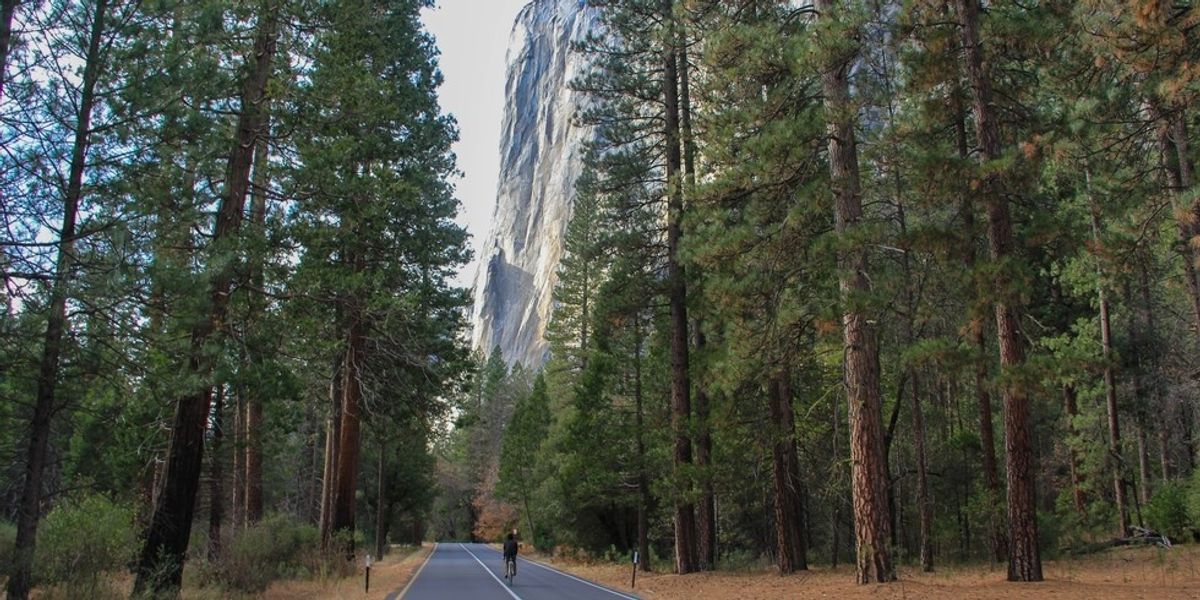
 Seorang kru menikmati pemandangan di sepanjang Four Mile Trail(Foto oleh Taylor Stitch)
Seorang kru menikmati pemandangan di sepanjang Four Mile Trail(Foto oleh Taylor Stitch)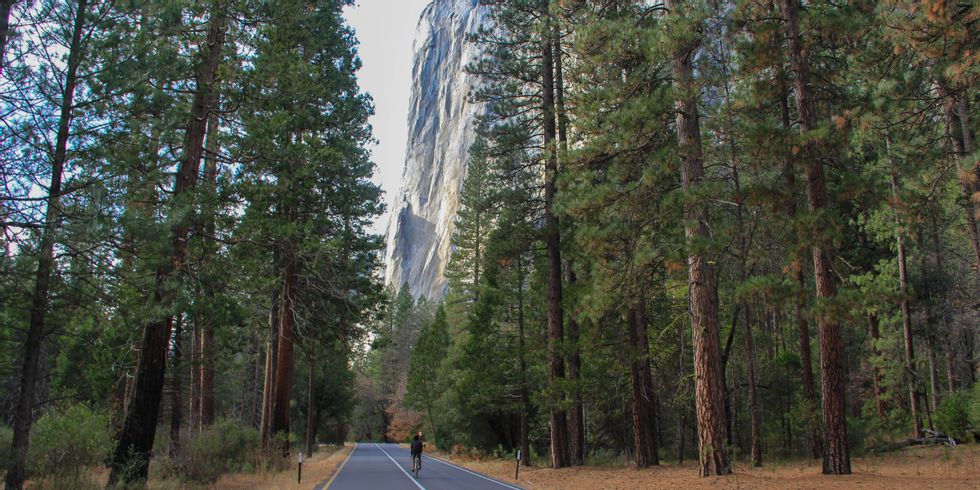 Seorang pengendara sepeda menikmati pemandangan El Cap yang menjulang tinggi di pangkuan sepeda Lembah Yosemite(Foto oleh Aron Bosworth)
Seorang pengendara sepeda menikmati pemandangan El Cap yang menjulang tinggi di pangkuan sepeda Lembah Yosemite(Foto oleh Aron Bosworth) Nevada Falls(Aron Bosworth)
Nevada Falls(Aron Bosworth) Pemandangan Lembah Yosemite dari Columbia RockFoto oleh Tyson Gillard
Pemandangan Lembah Yosemite dari Columbia RockFoto oleh Tyson Gillard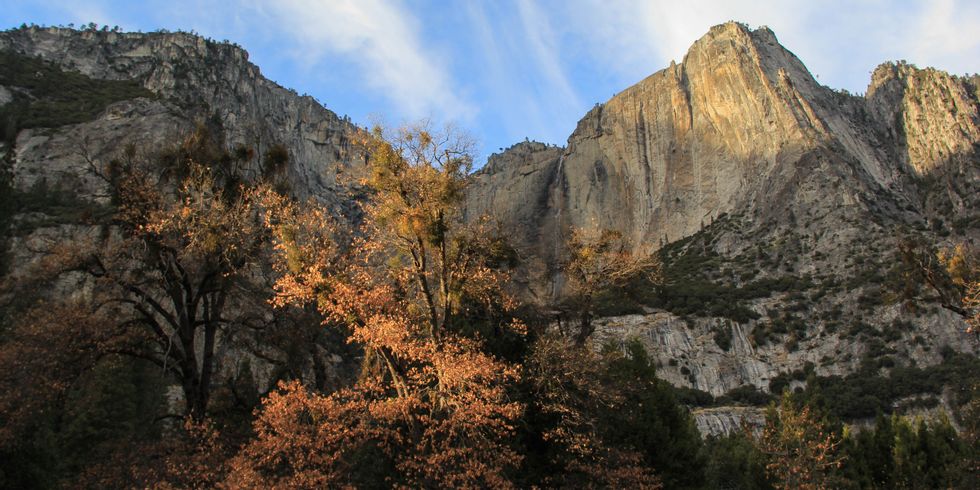 Warna musim gugur di bawah Air Terjun YosemiteFoto oleh Aron Bosworth
Warna musim gugur di bawah Air Terjun YosemiteFoto oleh Aron Bosworth (Aron Bosworth)
(Aron Bosworth) 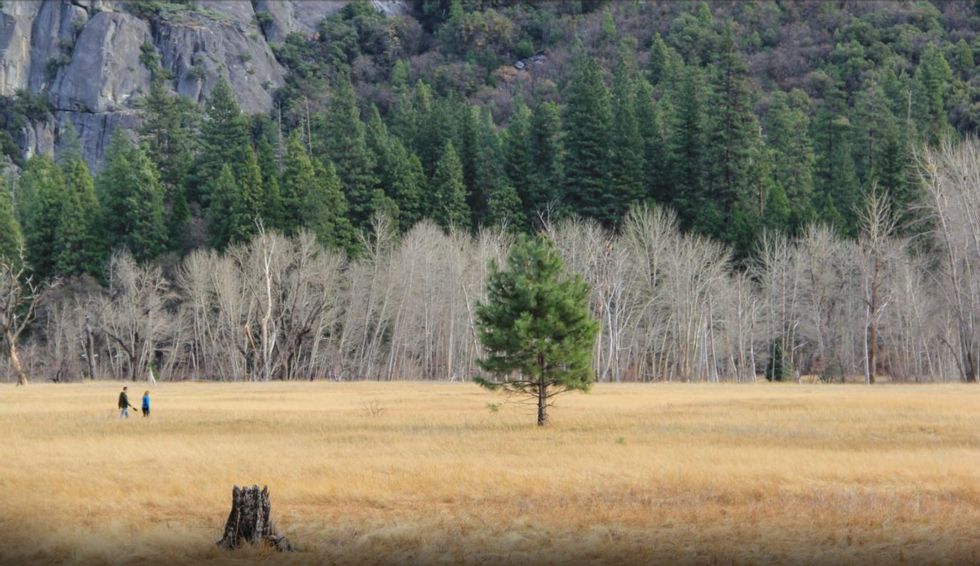 (Aron Bosworth)
(Aron Bosworth)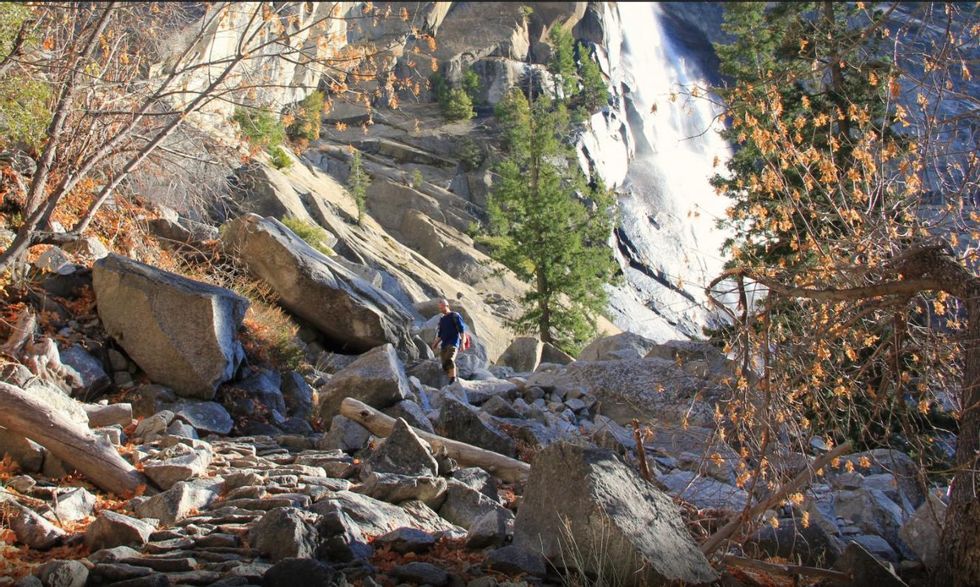 Mendaki di bawah Air Terjun Nevada. (Aron Bosworth)
Mendaki di bawah Air Terjun Nevada. (Aron Bosworth)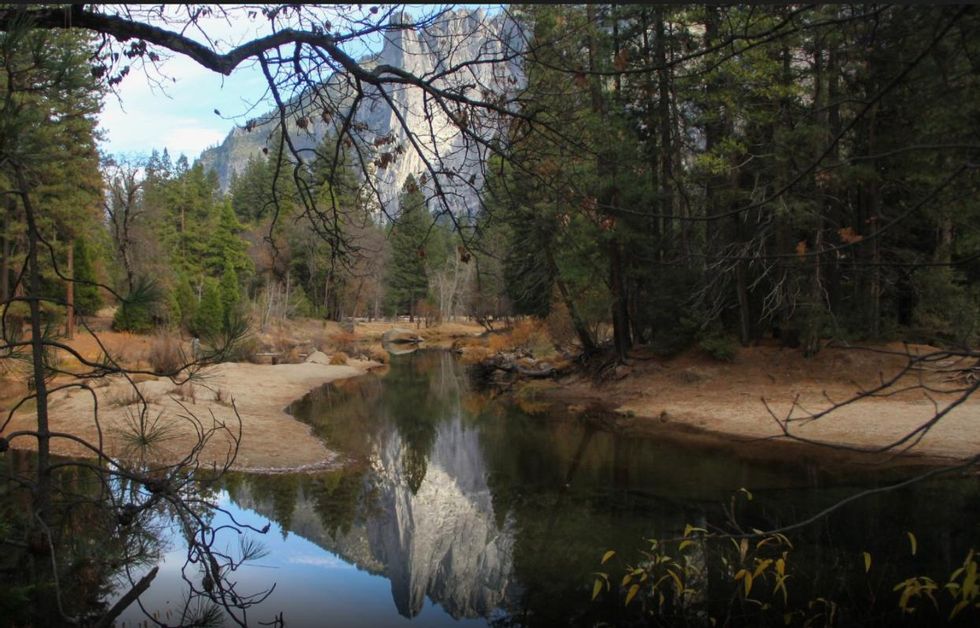 Batu Sentinel terpantul di Sungai Merced yang jernih. (Aron Bosworth)
Batu Sentinel terpantul di Sungai Merced yang jernih. (Aron Bosworth)
